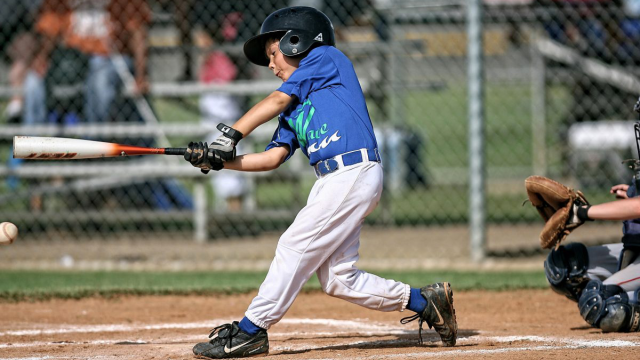What do you get when you cross bumper cars with basketball and lacrosse? WhirlyBall, of course! This exciting team sport has a simple concept–maneuver a WhirlyBug around the court, catch the ball and score! The best part? No experience is needed and you don’t need to be the “sporty” type to play. If you’re ready to give this sport a whirl, we’ve got everything you need to know.
photo: Helen Walker Green
A License to Whirl
The WhirlyBug – a souped up version of the classic fairground bumper car – comes equipped with one pedal that makes it go and no brakes. But don’t worry, parents! The WhirlyBug can be stopped by removing your foot from the pedal and the steering crank allows little drivers to turn on a dime in any direction, at any time. Got that? Now try driving the WhirlyBug while passing the ball to your teammates and avoiding your opponents at the same time!
photo: Helen Walker Green
WhiryFact: Did you know bumper cars are called “dodgems” in some parts of the world? The name comes from bumper cars made by the Dodgem company of Massachusetts. They were first made in 1919 and were a big hit because they were fast and, of course, you had to dodge ’em!
Go Team!
Once you and your crew have the basics of the WhirlyBug down, you’ll split off into red and yellow teams. Psst! There are up to ten WhirlyBugs on the court at a time – five of each color. And you don’t have to have a group of ten to play, but it does help to have an even number or just be evenly matched (maybe two kids equal one grownup or vice versa – you may find the kids are better players). Hint: make sure you know the number on your WhirlyBug in case the referee needs to get your attention during the game.
photo: Helen Walker Green
Whirly Rules
WhirlyBall is played with a softball-sized whiffle ball. Each player gets a scoop which he or she will use to scoop up the ball, catch it, pass to other players and try to score. The object of the game is to shoot the ball through the target at opposite ends of the court – a buzzer will sound when it goes in and your team will score a “whirlic” (two points!). Psst! You can keep track of your team’s progress on the electronic scoreboard.
photo: Helen Walker Green
And They’re Off!
The whistle blows and it’s pedals to the metal as each team tries to propel the ball down the court and score before their opponents can intercept. “It’s not easy,” says one Red Tricycle kid reviewer, “but it’s really fun!” Much hilarity ensues as players attempt to find the ball, get the ball, pass the ball – all while keeping control of their WhirlyBug and trying not to bump into one other. And yes, you will whirl at quite a dizzying pace!
photo: Helen Walker Green
WhiryFact: The Edmonds WhirlyBall team is known for doing well in national and international competitions. They’re the team to beat!
Newton’s third law of motion is often on display on the WhirlyBall court. For every action, there is an equal and opposite reaction – especially true when two WhirlyBugs collide at full speed! There will be occasional bumps and bangs, but that all adds to the fun. Psst… try to avoid a pileup and don’t bump your opponents too much otherwise the ref may give you a penalty!
photos: Helen Walker Green
Whirly History
In the 1960’s Kim Mangum was driving a golf-cart in his dad’s Salt Lake City auto shop when he grabbed a stick and started to play hockey with a tin can. Dad Stan saw the fun his son was having and thought this sport might just have a future. Instead of a golf cart, Stan Mangum set to work designing a speedy bumper car that could run without the sparking overhead power grid. The WhirlyBug was invented and Kim Mangum came up with the rules of “the world’s only totally mechanized team sport.”
photo: Helen Walker Green
Off the Court
There’s lots to do before and after your WhirlyBall game. Practice your scooping and throwing skills on a velcro wall or play air hockey, foosball or arcade games. Snack bar faire includes buffalo bites, paninis, pizza by the slice, fresh veggie trays and assorted fruit trays. The facility also serves non-alcoholic drinks as well as a large selection of bottled beer, cider and wine. Plans are currently in the works to move towards a healthier food selection and the owners welcome your suggestions.
photo: Helen Walker Green
Whirly Party
If you’re looking for a super-fun birthday party venue, consider WhirlyBall. It’s also perfect for classes, clubs and sports team get-togethers. And rumor has it, Bill Gates once had a birthday party here! Party packages include pizza, drinks and a personalized cake (or you can bring your own). Plus, you’ll get a video of your experience!
photo: Helen Walker Green
WhirlyBall of Washington
23401 Hwy. 99
Edmonds, Wa 98026
425-672-3332
Online: whirlyballseattle.com
Hours: Mon.-Sat., noon-midnight; Sun., noon-11 p.m. If you want to book your game outside these times, contact WhirlyBall.
Cost: $241.95 for 1 hour of court time; $340.95 for 1.5 hours of court time. Prices based on 10 people.
Good to Know: Parties include time on the WhirlyBall court for 10 guests plus pizza, non-alcoholic drinks and a personalized cake. $287.95 for a 1 hour game plus party; $386.95 for a 1.5 hour game plus party.
Ages: 8 and up
Have you and your kids tried WhirlyBall? Planning to give it a whirl soon? Tell us about your experience in the Comments below!
— Helen Walker Green














